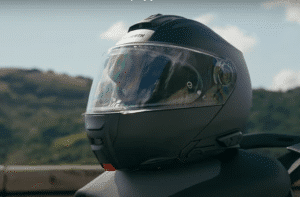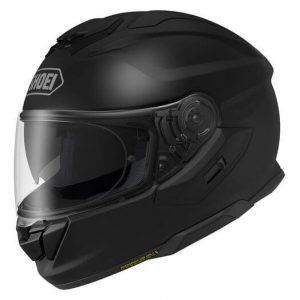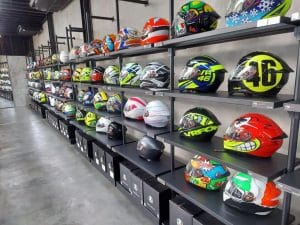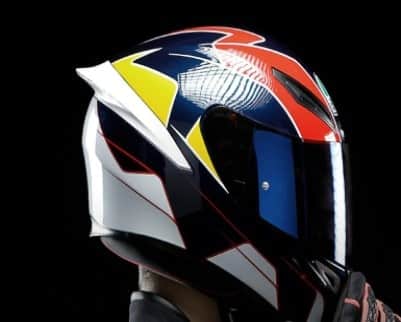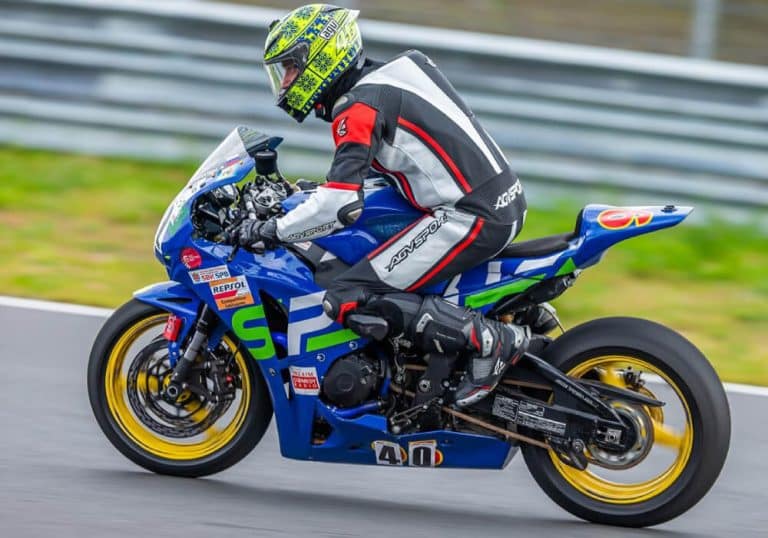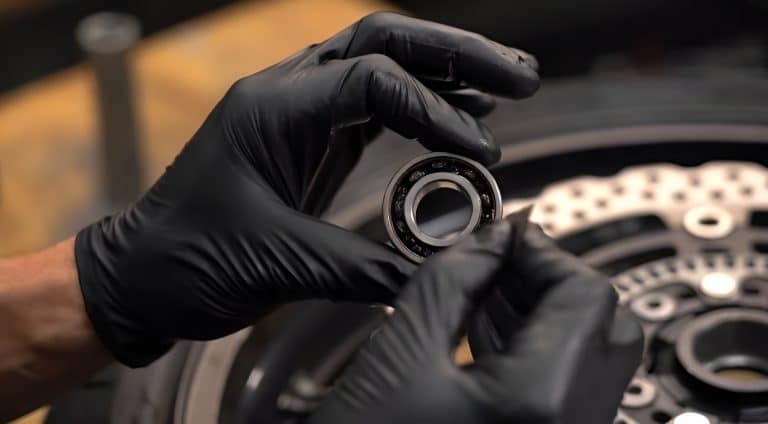The power of colors in evoking emotions is a well-explored phenomenon, extensively employed by product designers, including motorcycle gear manufacturers. Interestingly, while the build and protective features remain consistent between white and black helmets, the choice of color and graphics, much like the color of your motorcycle, surprisingly influences the likelihood of being involved in a crash. Enough to make you wonder: Is white helmet better than black?
White is comparatively better for a motorcycle helmet than black due to its higher visibility, inherent thermal regulation, and pure elegance. Its vibrant hue provides enhanced contrast with the road and surroundings, even in low-light or nighttime conditions, potentially decreasing the risk of a crash by as much as 24% compared to wearing a black helmet. Generally, lighter-colored helmets are associated with a 19% lower risk of being in a crash in contrast to darker ones.
Yet, exceptions exist. In regions prone to heavy snowfall or with abundant white backgrounds, yellow or bright orange helmets serve as better alternatives. The intricate graphics and reflective finishes of high-visibility (hi-viz) helmets are more than mere decoration; they significantly enhance your visibility to other road users, markedly reducing the chances of a SMIDSY (Sorry Mate I Didn’t See You) maneuver!
5 Best Motorcycle Helmets Under $300
| Helmet Model | Category | Safety Certification | Check & Shop Now |
|---|---|---|---|
| AGV K3 | Best Overall | DOT, ECE, SHARP | RevZilla | MotoSport | Amazon |
| Scorpion EXO-R420 | Best Urban Commuter | DOT, ECE, SNELL | RevZilla | MotoSport | Amazon |
| Bell MX-9 Mips | Best Adventure | DOT, ECE | RevZilla | BTO Sports | Amazon |
| Sedici Strada II | Best Sport-Touring | DOT, ECE, SNELL | RevZilla | CycleGear | J&P Cycles |
| HJC i90 | Best Value for Money | DOT, ECE, SHARP | RevZilla | MotoSport | Amazon |
Helmet Color vs. Safety: Understanding the Impact

Let’s begin by examining these intriguing data that illuminate how the color of your motorcycle helmet directly impacts your safety on the road:
| Helmet Color | Risk of Crash in Daytime | Risk of Crash in Low Light (Dusk or Dawn) | Visibility Level |
|---|---|---|---|
| White | Lowest | Lowest | Highest |
| Green | 4% increase | 10 % higher | Moderate |
| Red | 7 % increase | 10% higher | Moderate |
| Blue | 7% increase | 10% higher | Moderate |
| Silver | 10% increase | 15% higher | Low |
| Gray | 17% increase | 25% higher | Low |
| Black | 24% increase | 47% higher | Lowest |
The findings underscore the pivotal role that helmet color plays in ensuring your safety on the road. A white helmet, being the most visible, offers the lowest risk of a crash both during the day and in low-light situations. Yellow, beige, and cream (lighter colors not represented above) are also relatively safe, particularly in daylight hours. Darker shades of green, red, and blue are only marginally less noticeable during the day compared to white, but at night, the risk significantly escalates, reaching double-digit percentage increases.
On the other end of the spectrum, you have silver, gray, and black helmets, which tend to blend with the road and surroundings, making them the least conspicuous. That means a black helmet is 24% more likely to be involved in a crash compared to a white one, and so on.
I find no difference in the likelihood of being involved in a nighttime crash regardless of the chosen helmet color. But during the early hours of dawn and late hours of dusk (low-light conditions), motorcyclists face the most significant threat on the road. Here, the contrast in accident prevention between white and black helmets is striking, with black being 47% more likely to be in a crash than white.
Considerations When Choosing Motorcycle Helmet Color

Having been an avid rider for more than 50 years, I align my perspective with the 1981 Hurt Report’s conclusion: in two out of three motorcycle crashes involving another vehicle, the driver of the other vehicle was at fault for violating the motorcyclist’s right of way. Shockingly, nearly half (45%) of these incidents occur at intersections, where a driver entering from a side street crosses into a rider’s right of way, attempting to beat others to a left-hand turn. Most drivers, regretfully, admit they didn’t notice the motorcycle until the crash occurred. In such dire situations, your only lifeline is to be as visible as possible and skillfully maneuver out of tight spots through evasive action.
But before I digress, here are the aspects I prioritize when choosing a helmet, specifically concerning color and graphics:
A Conspicuous Helmet Enhances Visibility
I prefer brighter hues such as white, yellow, and orange due to their superior reflectivity and visibility, especially during limited natural lighting conditions at dawn or dusk. But I acknowledge I recognize that a black hi-viz helmet adorned with neon-green reflective decals can produce a comparable effect.
The challenge lies in the fact that some of these materials depend on external light sources for reflection, whereas colors like white inherently emit their own light, ensuring continuous visibility.
Choose a Helmet Color That Matches Your Riding Environment
Consider your riding environment when selecting a helmet color. In urban settings, a reflective helmet with bold graphics adds to your visibility amidst traffic glare. On the flip side, a green or gray helmet may blend into the natural surroundings, making you less conspicuous during off-road adventures.
But even a white helmet won’t stand out in an Alaskan blizzard. If your rides predominantly take you through uncharted paths, the color of your helmet becomes inconsequential.
Lighter Colors Aid in Heat Management
In the field of biology, it’s termed thermoregulation. Yet, the basic laws of physics remind us that dark-colored surfaces absorb and emit more heat compared to reflective ones. A white or brightly colored helmet reflects more heat from the sun (insolation) than a black or dull-colored counterpart.
And so, when navigating the scorching Moroccan Marrakech Desert routes, opting for a white-colored helmet becomes essential to keep your ‘computer box’ cool while you ride.
And Helmet Colors Fade Differently With Sun Exposure

Motorcycle helmets, depending on their colors, exhibit varying levels of resilience against the sun’s damaging UV rays. Darker shades like black and blue possess a higher capacity to absorb these rays, setting them apart from lighter counterparts in white and pastel hues.
Moreover, helmets in earthy and neutral tones, such as cream and beige, demonstrate remarkable endurance when exposed to sunlight, outlasting darker organic colors like reds, blues, yellows, and greens. The latter often incorporate organic pigments, rendering them vulnerable to degradation upon sun exposure.
If your goal is to maintain a helmet’s pristine appearance despite outdoor use, choosing a white or pastel-colored helmet proves to be a prudent decision. These lighter shades not only offer a stylish aesthetic but also ensure long-lasting durability, making them an excellent investment for riders seeking enduring quality and appealing design.
But Remember, Eye-Catching Helmets Might Attract Thieves Too

Strikingly visible helmets are unfortunately more prone to theft when left unattended on motorcycles. Surprisingly, it’s black motorcycles that thieves prize, not their brightly colored counterparts, as black helps them blend into traffic during getaways. But when it comes to helmets, vibrant colors find it harder to escape the notice of passersby, which is why investing in a motorcycle helmet lock becomes essential.
All This Without Breaking The Bank!
I understand that the intricate finishes and decals on premium helmets significantly contribute to their overall cost. Take, for example, the highly regarded SNELL M2025-rated Arai RX-7V EVO Isle of Man TT 2025 Limited Edition. In its production, the painting process, involving tasks such as sanding, priming, painting, and water-decal application, covers an impressive 15 out of the total 27 stages of manufacture. These steps alone require 10 out of the 18 hours dedicated to completing a helmet.
In fact, Arai helmets undergo precise hand-painting and embellishment processes carried out by skilled female artisans—an artisanal craftsmanship that significantly adds to the final cost, setting it apart from the base helmet price.
5 Common Motorcycle Helmet Color Choices and What Each Says About You

Colors possess a unique language, conveying our emotions and preferences. A unique language extends to the realm of motorcycle helmets, where colors go beyond mere aesthetics—they mirror personality traits and, intriguingly, safety preferences.
Ultimately, the choice of a helmet color speaks volumes about who we are, and it’s not all in black and white.
| Helmet Color | Pros | Cons | Rider’s Personality (What the Color Says About You) |
|---|---|---|---|
| White | ✅ Highly visible ✅ Reflects heat and UV rays to keep the bike cooler ✅ Classic and timeless appearance ✅ Easier to find a replacement if needed ✅ A neutral color that tends to have good resale value ✅ Easier to keep clean than darker colors ✅ Clean, professional appearance. | ❎Shows dirt and grime more easily ❎ Prone to fading over time ❎ Not effective at hiding dents and scratches ❎ Less popular than other colors ❎ Not suitable for all types of riding conditions. | White is often associated with cleanliness, simplicity, and purity. Some people may perceive white helmets as being sleek, modern, or minimalist. |
| Black | ✅ Classic and timeless style ✅ Shows dirt and grime less ✅ Versatile color that matches many outfits and personal styles ✅ Less prone to sun damage and fading. | ❎ Absorbs more heat from the sun ❎ Harder to keep clean ❎ More prone to scratching and scuffing ❎ Less visible. | Riders who choose black helmets often portray luxury, confidence, and sophistication. They love being in control. |
| Red | ✅ A bold and attention-grabbing color, making it easy for others to spot you even in foggy weather ✅ Often associated with power and strength, giving your helmet a more aggressive and sporty appearance ✅ Often associated with danger and excitement, which can be appealing to adventurous riders. | ❎ More prone to attracting attention from law enforcement ❎ May fade more quickly or easily compared to other colors ❎ More prone to accidents, as they may be more easily visible to other drivers. | Red helmets are bold, energetic, and confident. A color often associated with passion, intensity, and power, which may reflect the personality of the rider as well. |
| Blue | ✅ Increased visibility ✅ Eye-catching design ✅ Increased resale value ✅ A versatile choice for customizing your motorcycle ✅ Exudes coolness and confidence. | ❎ Limited color choices for accessories and clothing ❎ Stereotypical associations with recklessness or aggression. | A blue helmet may be described as cool, confident, and calm. It’s a color that evokes feelings of trust and reliability, and it may be associated with a rider who is level-headed and collected. |
| Green | ✅ Green is a bright and highly visible color, which makes it easier for other drivers to spot ✅ Environmental friendliness ✅ Unique appearance ✅ Easier to match with gear ✅ More edgy and trendy, giving the rider a cool, fashionable image. | ❎ Limited color options for customizations or accessories ❎ Less visually appealing ❎ Harder to spot during adventure. | A green helmet may be seen as vibrant, energetic, and playful. Green is often associated with nature and growth, so its owner may be perceived as environmentally friendly and adventurous. |
What About High Visibility (Hi-Viz) Helmets?

Following the insights of the 1981 Hurt Report, we’ve witnessed transformative changes in the design of motorcycle decals and riding gear. High-visibility (hi-viz) helmets emerged in the past decade, offering luminous conspicuity and safety regardless of ambient lighting conditions.
The American National Safety Institute has laid down the standard ANSI/ISEA 107-2020, detailing the requirements for materials used in High-Visibility Safety Apparel and Headwear, encompassing motorcycle helmets classified under type R (for roadway use).
The standard ANSI/ISEA 107-2020 mandates exceptionally conspicuous colors, including fluorescent yellow-green, red, and orange, as well as yellow, white, or silver, which practically ‘burn the eyes’ of other road users, ensuring heightened safety for the wearer. Reflective yellow-green, orange, or red coatings are most common on hi-viz helmets, found on models ranging from the budget-friendly Scorpion Exo 500 to the mid-range Shoei Quest Overt, and the high-end Schuberth C5 Globe and Arai XD-4 Hi-Viz Neon.
Michael’s Summary and Conclusion
The so-called “facts,” which are essentially opinions about whether white or black motorcycle helmet colors are safer, cooler, or more attractive, have been subjects of debate and argument for decades. These viewpoints are primarily rooted in personal preferences rather than hard scientific evidence. For instance, a black helmet might have a higher surface temperature in certain conditions, but this heat doesn’t transfer through the shell, EPS liner, and comfort padding to the rider’s head. Thus, while technically, black helmets might be hotter and white helmets cooler in terms of shell temperature, this detail holds no significance for the wearer.
The discussions above primarily revolve around which helmet color is safer, but I believe most motorcyclists choose their helmet color based on style and aesthetics rather than safety considerations. One of the most effective ways to enhance helmet visibility is by adding reflective decals, graphics, or tape. The visibility of the helmet color becomes more critical in low-light or no-light riding situations.

My color preferences vary based on the type of riding and the motorcycle I’m using. The all-black AGV AX9 helmet pictured above is my go-to adventure touring helmet, primarily used on the street with some limited off-road excursions.

When riding predominantly off-road, color isn’t a safety concern. Animals like deer won’t differentiate between a white, black, or multicolored helmet. In this context, I own two helmets. The AX8 Rossi replica is vibrant but expensive, so I reserve it for sunny, dry days. For regular off-road use, I prefer the all-white AGV AX8, focusing more on comfort and lightweight design rather than graphics, considering it often ends up covered in dirt and mud.

For sport bike riding, track days, and road racing, I opt for a multicolored helmet that matches my motorcycle and leathers. The AGV Kawasaki-colored K5 pictured above serves as an excellent example.
FAQs — I Have the Answers!
Q: Is White Helmet Better Than Black?
Despite both having the same build and protective features, a white helmet proves its superiority due to its higher visibility, inherent thermal regulation, and elegant design. Its vibrant hue enhances contrast with the road and surroundings, even in low-light or nighttime conditions, potentially reducing the risk of a crash by as much as 24% compared to wearing a black helmet.
Q: Are White Helmets Cooler Than Black?
Yes, white helmets are cooler than black ones. White reflects all light wavelengths, preventing a noticeable rise in the helmet’s temperature. In contrast, black absorbs all light wavelengths, converting them into heat.
Q: Are White Helmets Safer Than Black?
Yes, white helmets are safer than black helmets because their higher reflectivity enhances visibility, particularly during nighttime rides. But helmets in green orange, yellow are the safest colors, as they capture the attention of fellow road users, substantially improving overall safety. In summary, white and hi-viz colored helmets are superior to black ones due to their reflective properties, enhancing rider visibility and road safety.
Q: Which Is the Best Helmet Color for Visibility
White is the best helmet color for visibility because it evenly reflects all visible light that strikes it, without absorbing any, regardless of the wavelength or spectral distribution of the light. Because it doesn’t absorb any incident light, a white helmet is the lightest possible color.
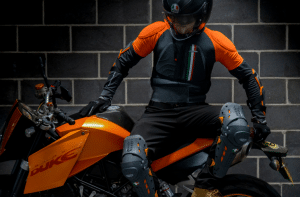 I've diligently categorized my motorcycle gear recommendations into all available categories, with the aim of providing you with a comprehensive analysis that showcases the absolute best options for all your needs. These items are the culmination of in-depth research, extensive testing, and personal use throughout my vast experience of 50+ years in the world of motorcycling. Besides being a passionate rider, I've held leadership positions and offered consultancy services to reputable companies in over 25 countries. To See Top Picks and the Best Prices & Places to Buy: Click Here! |
Information for this article was partially sourced and researched from the following authoritative government, educational, and non-profit organizations:
- National Library of Medicine
- ResearchGate
- Brauns Law Accident Injury Lawyers, PC
- National Safety Council
- Jordan Law
LPP/A




